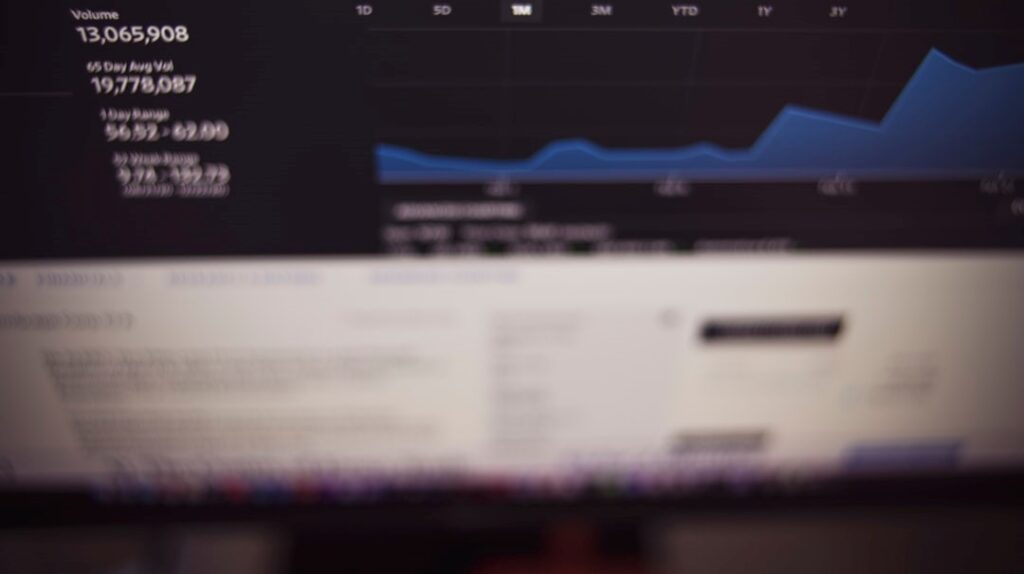Introduction
Welcome to our exploration of the swirling world of macroeconomics and its undeniable influence on global markets. In recent years, we’ve witnessed significant developments in economic policies, trade agreements, and financial regulations that have shifted the bedrock of international commerce. From the rise and fall of stock markets to the fluctuating value of currencies, every move in the macroeconomic sphere sends ripples through global markets, affecting businesses, investors, and economies at large. Today, we’ll dive into these changes and understand how they’re molding the financial stability and economic trends around the world. Stick around as we unpack the complexities of recent macroeconomic developments and their expansive impact on the global stage.
Recent Developments in Macroeconomics
Image courtesy: Unsplash

The world of macroeconomics is always evolving, with new trends and developments shaping the economic landscape on a global scale. But before we dive into the latest happenings, let’s take a moment to understand some fundamental concepts that lay the foundation of macroeconomics.
Explanation of key macroeconomic concepts
Macroeconomics is all about the big picture. It studies how economies operate on a large scale, addressing issues like inflation, unemployment, gross domestic product (GDP), and monetary policy. Inflation, for example, measures how much more expensive a set of goods and services has become over a certain period—a crucial indicator of economic health. Unemployment rates provide insights into the workforce’s status, reflecting how many people are actively looking for jobs. GDP gives us the total value of all goods and services produced, serving as a snapshot of economic performance. And monetary policy? That’s how central banks manage the economy’s liquidity to keep it running smoothly, influencing things like interest rates and the money supply.
Overview of recent trends in global macroeconomics
Recently, macroeconomic trends have been significantly influenced by various factors, including pandemic recovery efforts, technological advancements, and geopolitical shifts. Post-pandemic, many countries are navigating their way back to pre-COVID economic activity levels, with stimulus packages and monetary policy adjustments playing pivotal roles. Technological advancement is another driver, revolutionizing industries and labor markets, thereby influencing productivity and economic structures. Meanwhile, geopolitical tensions and trade agreements are also impacting globalization patterns and economic integration, reshaping global supply chains and trade dynamics. These trends are critical in understanding the global economic landscape’s current state and future direction.
Influence on Financial Stability
The twists and turns of the macroeconomic environment have profound implications for financial stability. The health of global financial institutions and the broader financial system can be directly affected by changes in macroeconomic conditions.
How changes in macroeconomics impact financial institutions
Macroeconomic changes influence financial institutions in several ways. For starters, interest rate shifts, driven by monetary policy, affect banks’ profitability by changing the spread between what they pay on deposits and earn on loans. High inflation rates can erode the real value of loans’ returns, while precipitating central banks to hike interest rates, potentially slowing economic growth. Additionally, fluctuations in GDP and employment rates can impact consumer confidence and spending, influencing demand for loans and banking services. Moreover, large-scale economic shifts can lead to increased market volatility, affecting the trading, asset valuation, and risk management practices of financial institutions.
Case studies demonstrating the effects on financial stability
Case Study 1: The Global Financial Crisis of 2008
One of the most striking examples of macroeconomic changes affecting financial stability is the 2008 financial crisis. Initially triggered by a collapse in the U.S. housing market due to highly leveraged and risky mortgage-backed securities, it quickly spiraled into a global banking crisis. This was exacerbated by high levels of debt and inadequate regulation and oversight of financial institutions. The crisis led to significant interest rate cuts worldwide, massive bailouts, and stimulus packages to prevent a total economic collapse. The aftermath saw tightened regulations and a re-evaluation of risk management practices in financial institutions worldwide.
Case Study 2: The COVID-19 Pandemic
The economic shock induced by the COVID-19 pandemic is another prime example. Governments and central banks around the world responded with unprecedented fiscal stimulus and monetary easing to support economies. This included slashing interest rates to historic lows and injecting trillions into the economies through quantitative easing programs. While these measures were essential in stabilizing financial markets and economies, they have also led to concerns about potential long-term effects on financial stability, such as inflated asset prices and increased public and private debt levels.
Both of these case studies highlight the intricate relationship between macroeconomic policies, global economic trends, and financial stability. They underscore the importance of vigilant economic and financial monitoring and the need for robust policies that can adapt to changing macroeconomic landscapes. As we continue to navigate through these evolving trends, understanding their impact on financial stability remains crucial for policymakers, financial institutions, and investors alike.
In conclusion, the dynamic field of macroeconomics directly influences global economic health and financial stability. Recent developments, from pandemic recovery efforts to technological advancements and geopolitical shifts, have profound implications for economies worldwide. Financial institutions, in turn, must navigate these changes, adapting their strategies to manage risks and seize opportunities. Through careful analysis and strategic planning, the global economy can strive for balanced growth and lasting financial stability amidst these evolving macroeconomic landscapes.
Implications for Global Markets
Image courtesy: Unsplash

Understanding how macroeconomic developments impact global markets is crucial for investors, policymakers, and businesses worldwide. These developments can influence international trade, stock markets, and even forecast future economic trends, shaping how countries engage with each other economically.
Analysis of how macroeconomic developments affect international trade
Macroeconomic developments have a profound impact on international trade. As countries experience economic growth, inflation, or changes in fiscal policies, international trade patterns can shift dramatically. For instance, when a country’s economy grows, its increased demand for goods and services often leads to greater imports. Conversely, if a country enters a recession, its demand for imports typically declines, affecting global trade flows. Furthermore, exchange rate fluctuations can make exports cheaper or more expensive, directly influencing the trade balance between countries. For example, if the US dollar strengthens, American goods become more expensive for foreign buyers, potentially reducing exports and affecting global trade dynamics.
- Economic growth: Leads to increased demand for imports.
- Inflation: Can affect the purchasing power, altering import and export volumes.
- Fiscal policies: Changes in taxation or government spending can impact domestic consumption and demand for foreign goods.
- Exchange rate fluctuations: Affects the competitiveness of exports and imports.
Discussion on the influence of macroeconomics on stock markets
The ripple effects of macroeconomic developments on stock markets are significant and varied. Interest rates, inflation, and economic growth are among the key factors that can either buoy or burden stock markets. For instance, when central banks lower interest rates, it typically makes borrowing cheaper, encouraging spending and investment. This can lead to an uptick in stock prices as companies’ future earnings prospects improve. Conversely, high inflation can erode purchasing power, potentially leading to slower economic growth and adversely affecting stock market performance. Moreover, geopolitical events or significant policy changes can lead to market volatility as investors react to anticipated impacts on the global economy. - Interest rates: Lower rates can stimulate spending and investment, boosting stock prices.
- Inflation: High inflation can dampen economic growth, negatively impacting stock performance.
- Geopolitical events: Can cause uncertainty and volatility in global stock markets.
Forecasting future trends based on current macroeconomic indicators
Looking ahead, analyzing current macroeconomic indicators can provide valuable insights into future economic and market trends. Key indicators such as GDP growth rates, inflation, unemployment rates, and consumer confidence indices give clues about the health of the economy and potential future directions. For instance, persistent high inflation might indicate that central banks will raise interest rates to temper demand, potentially slowing economic growth. Conversely, strong GDP growth and improving employment numbers could signal robust economic health, fostering a favorable environment for stock market gains. While forecasting is inherently uncertain, understanding these indicators can help stakeholders make informed decisions. - GDP growth rates: Indicate overall economic health and potential market directions.
- Inflation and interest rates: Affect borrowing costs and consumer spending.
- Employment numbers: Reflect economic strength and consumer confidence.
By keeping an eye on these developments and indicators, stakeholders can better navigate the complexities of global markets and make strategic decisions to safeguard and grow their investments.
Conclusion
As we wrap up our exploration into the influence of recent macroeconomic developments on global markets, it’s clear that the landscape of international finance is constantly evolving. These changes, driven by factors such as government policies, emerging technologies, and global crises, have far-reaching implications for financial stability and economic trends worldwide. Understanding these dynamics is crucial for investors, policymakers, and anyone interested in the health of global markets. - Government policies can either stimulate growth or lead to inflation and debt accumulation, significantly affecting market performance.
- Technological advancements are reshaping industries, creating new investment opportunities, and challenging traditional business models.
- Global crises, such as pandemics or geopolitical tensions, can disrupt supply chains and market dynamics, leading to increased volatility.
By staying informed about these macroeconomic developments, individuals and institutions can better navigate the complexities of global markets, making strategic decisions that foster economic resilience and growth.
This paper is authored by Dr. Shirley Ayangbah, an accomplished scholar with expertise spanning international law (International Economic Law), economics, and sustainable development. With a Ph.D. in International Law focused on integrating sustainable development into investment treaties, and advanced degrees in economics and international relations.
























